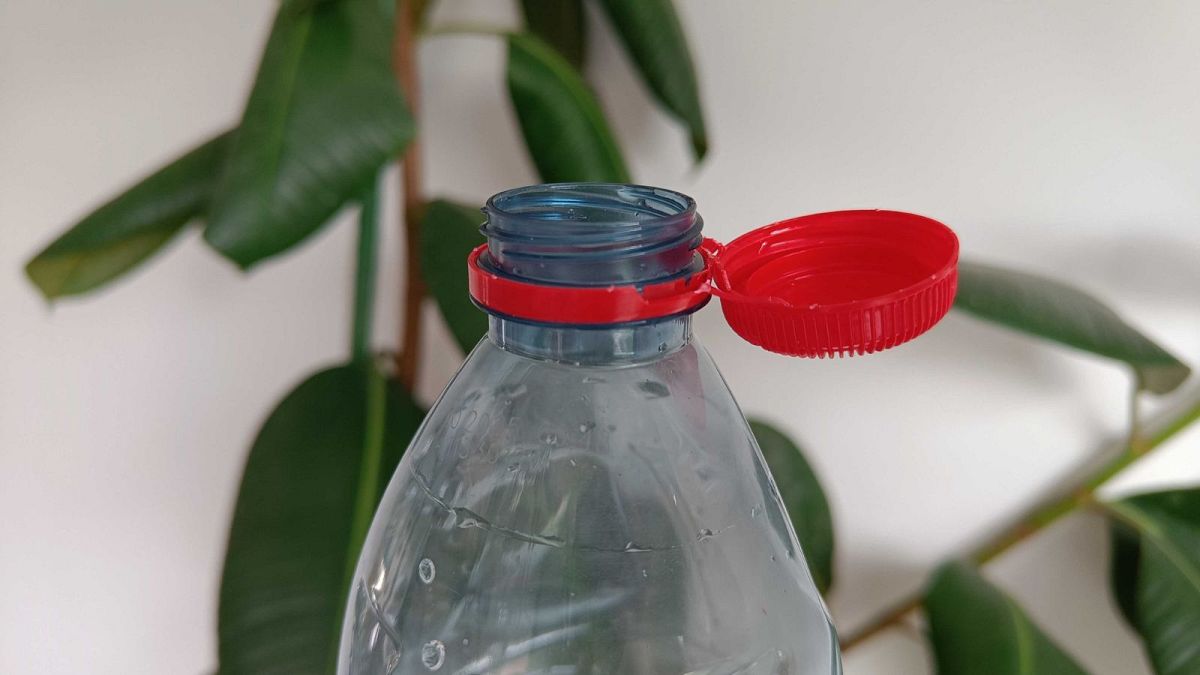A new pinned design for plastic caps on beverage bottles is causing concern among some consumers, but what’s behind the move?
Cracking open a cold Coke on a hot day is one of life’s greatest pleasures, but this summer it will be a different experience.
That’s because plastic bottles in Europe are changing due to new EU rules.
You may have already come across the new plastic caps attached to the bottle.
If not, you will soon, as the rollout will be widespread in Europe from July.
Here’s why it’s happening and what people think of the new design.
What is the new design of the plastic bottle cap?
The new design is quite simple. Instead of the caps we are used to that unscrew completely, there are extra strips included plastic connecting the cap to the bottle.
Coca-Cola was one of the first to embrace the change, as they rolled out the design across Europe over the past year.
“This small change has the potential to have a big impact and ensure that consumers recycle our bottles, and that no cap is left behind,” said Coca-Cola Ireland manager Agnese Filippi ahead of the launch.
Consumers are not happy with the new bottle caps
Coca-Cola and other major beverage companies weren’t always so open to changing their bottle designs.
When the rules requiring the change were first announced by the EU in 2018, they hit back, claiming it would lead to an increase in the amount of plastic at the expense of manufacturers.
Now that it’s being rolled out across the continent, some consumers are also upset with the new design.
They have complained on social media that the cap hit them in the face as they drank, making it more difficult to serve drinks.
Why is the cap on my plastic bottle?
It is mandatory for all EU countries to abolish loose caps for plastic drinks bottles up to three liters from July. It is part of an EU directive announced in 2018 that aims to reduce single-use plastic waste.
Loose caps have been banned as part of a larger plan to tackle this plastic waste in Europe.
The bloc says they are one of the most contaminated single-use plastic products on beaches.
Currently, large amounts are not recycled and end up in our oceans. Researchers estimate that plastic production and combustion pumped more than 850 million tons of greenhouse gases into the atmosphere in 2019.
The new plastic caps are just one of a series of measures that the EU is pursuing.
Packaging for fresh fruit and vegetables, mini hotel toiletries and fast food in restaurants will soon be banned legislation passed in March. Although it is an uphill battle with major lobbying efforts against such moves and recent nerves surrounding the European Green Deal.
The hope is that by attaching the cap, people will be less likely to throw them away because you then have to throw in the whole bottle.
EU member states are free to set their own design requirements, as long as “the caps and lids remain attached to the containers during the intended use phase of the products.” The design we currently see in drinks like Coke is therefore not the only possible one, although it will be the most common given their market dominance. Other major beverage companies have already adopted Coke’s design.
Why does Britain need new caps after Brexit?
While it is a EU policy to get rid of it, this has had knock-on effects in other countries as well. Companies mass produce bottles and caps, so it’s complicated to make different styles for different countries. As a result, major drinks companies are also rolling out the new caps in non-EU countries such as the UK, even though they are not legally required to do so.
